1. Introduction
Brass vs Stainless Steel is a common comparison in material selection for industries such as plumbing, architecture, marine engineering, and mechanical manufacturing.
These two metals, though often used interchangeably in some applications, offer significantly different properties in terms of strength, corrosion resistance, machinability, appearance, and cost.
Brass is a copper-based alloy known for its excellent conductivity, warm aesthetic, and ease of machining.
Stainless steel, on the other hand, is an iron-based alloy renowned for its superior corrosion resistance, strength, and durability.
2. What Is Brass?
Brass is a versatile and widely used metal alloy composed primarily of copper (Cu) and zinc (Zn).
The proportions of these two elements can be varied to achieve different mechanical, physical, and chemical properties,
making brass suitable for a wide range of applications, from decorative fixtures to precision components in electronics and machinery.
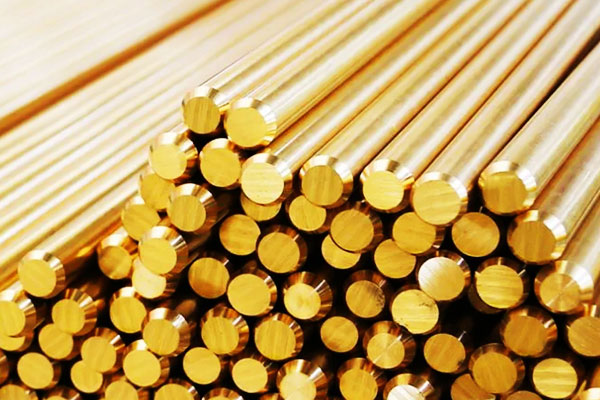
Chemical Composition & Classification
Brass typically contains:
- Copper (Cu): 55–70%
- Zinc (Zn): 30–45%
- Optional elements:
-
- Lead (Pb): Added (up to 3%) in machinable brasses such as C36000 to improve chip-breaking during machining
- Tin (Sn), Aluminum (Al), Silicon (Si): Added in specific grades (e.g., naval brass, silicon brass) to improve corrosion resistance or strength
Common Types of Brass:
| Grade (UNS) | Typical Composition (Cu/Zn/Other) | Key Features | Typical Applications |
| C26000 (Cartridge Brass) | 70% Cu / 30% Zn | Excellent ductility, cold workability | Ammunition casings, deep-drawn parts, radiator cores |
| C36000 (Free-Cutting Brass) | 61.5% Cu / 35.5% Zn / 3% Pb | Outstanding machinability (rated 100%) | Precision machined parts, fittings, fasteners |
| C46400 (Naval Brass) | 60% Cu / 39% Zn / 1% Sn | Good corrosion resistance in saltwater | Marine hardware, propeller shafts, seawater valves |
| C23000 (Red Brass) | 85% Cu / 15% Zn | Strong, corrosion-resistant, reddish hue | Plumbing, pump cylinders, architectural panels |
| C27200 (Yellow Brass) | 63% Cu / 37% Zn | Good strength, moderate ductility, low cost | Plumbing tubes, musical instruments, decorative items |
| C38500 (Architectural Brass) | 57% Cu / 40% Zn / 3% Pb | Excellent for hot forging and machining | Ornamental fixtures, hinges, architectural trim |
| C35300 (High-Leaded Brass) | ~62% Cu / ~35% Zn / ~3% Pb | Superior machinability and pressure tightness | Valve stems, lock bodies, screw machine products |
| C28000 (Muntz Metal) | 60% Cu / 40% Zn | High strength, used for hot working and rolling | Marine cladding, condenser tubes, architectural sheet |
| C44300 (Admiralty Brass) | 70% Cu / 29% Zn / 1% Sn | Good corrosion resistance, especially to seawater | Heat exchangers, condenser tubes, desalination units |
Advantages of Brass
- Excellent machinability: Especially in leaded grades, brass machines 2–3 times faster than mild steel
- Good corrosion resistance: Particularly in freshwater and mild atmospheric conditions
- High thermal and electrical conductivity: Suitable for heat exchangers, terminals, and connectors
- Aesthetic appeal: Attractive golden-yellow color, often used for decorative and architectural applications
- Non-magnetic and non-sparking: Useful in sensitive electronic or hazardous environments
Disadvantages of Brass
- Lower strength compared to stainless steel: Typical tensile strength ranges from 300–500 MPa
- Prone to dezincification: In certain environments (e.g., stagnant water, acidic or high-chloride conditions), zinc can leach out, weakening the alloy
- Relatively soft: Can deform under heavy loads or high-stress applications
- Copper-based cost volatility: Brass prices are sensitive to fluctuations in the global copper market
3. What Is Stainless Steel?
Stainless steel is a corrosion-resistant iron-based alloy primarily composed of iron (Fe), chromium (Cr) (at least 10.5%), and often other elements like nickel (Ni), molybdenum (Mo), manganese (Mn), and carbon (C).
Its defining feature is the formation of a passive chromium oxide (Cr₂O₃) layer on the surface, which protects the metal from oxidation and chemical attack.
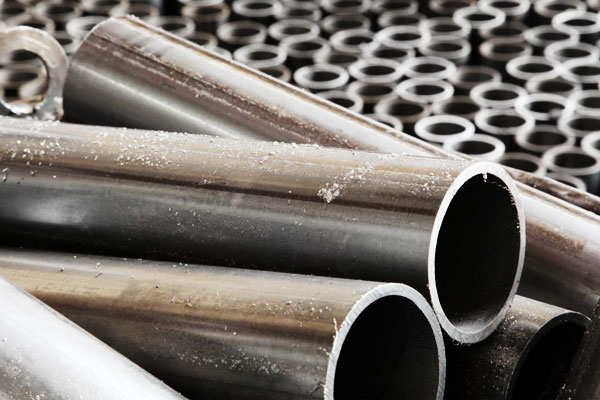
Key Characteristics:
- Corrosion Resistance: Excellent resistance to oxidation, acids, alkalis, and chlorides.
- Mechanical Strength: High strength and toughness across a wide range of temperatures.
- Aesthetic Finish: Sleek, clean appearance with various surface finishes.
- Hygienic: Easy to clean, non-porous surface suitable for food and medical industries.
Chemical Composition & Classification
Stainless steels are classified into five main families, each offering unique properties and suitable for different applications:
| Family | Primary Alloying Elements | Key Properties | Typical Grades |
| Austenitic | Cr (16–26%), Ni (6–22%), low C | Non-magnetic, excellent corrosion resistance, ductile | 304, 316, 321, 310 |
| Ferritic | Cr (11–18%), low Ni or none | Magnetic, moderate corrosion resistance, good formability | 409, 430, 446 |
| Martensitic | Cr (12–18%), higher C | Magnetic, can be hardened, moderate corrosion resistance | 410, 420, 440A/B/C |
| Duplex | Cr (18–28%), Ni (4–8%), Mo | Mixed austenite/ferrite structure, high strength & resistance | 2205, 2507 |
| Precipitation-Hardening (PH) | Cr, Ni, Cu, Nb, Al | High strength via heat treatment, good corrosion resistance | 17-4 PH, 15-5 PH |
Advantages of Stainless Steel
- High corrosion resistance, especially in aggressive environments.
- Excellent strength-to-weight ratio.
- Wide range of surface finishes (brushed, mirror, matte, etc.).
- Non-reactive and safe for food and pharmaceutical applications.
- Long service life with low maintenance.
- 100% recyclable.
Disadvantages of Stainless Steel
- More expensive than carbon steels and some copper alloys.
- Difficult to machine (especially austenitic grades).
- Requires specific knowledge for welding and fabrication.
- Lower thermal and electrical conductivity than brass or copper.
4. Mechanical Properties of Brass vs Stainless Steel
When comparing brass and stainless steel, understanding their mechanical properties is essential for selecting the right material for load-bearing, wear-resistant, or structurally demanding applications.
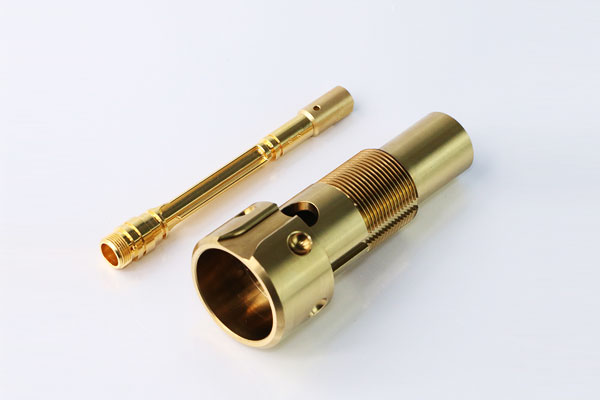
Key Mechanical Properties Comparison
| Property | Brass (e.g., C36000 Free-Cutting) | Stainless Steel (e.g., 304, 316) | Comments |
| Tensile Strength | 300–500 MPa | 500–1000 MPa | Stainless steel is significantly stronger, suitable for structural use. |
| Yield Strength | 100–350 MPa | 200–600 MPa | Stainless offers higher yield strength; better at withstanding stress loads. |
| Hardness (Brinell) | 55–100 HB | 150–250 HB | Stainless steel is harder, offering better wear resistance. |
| Hardness (Rockwell B/C) | B35–B80 | B80–C30 (varies by grade) | Brinell and Rockwell hardness tests confirm stainless is more resistant. |
| Elongation at Break | 25–50% | 40–60% | Both are ductile, but stainless is more elastic under stress. |
| Fatigue Strength | ~100–200 MPa | ~200–600 MPa | Stainless steel performs better under cyclic loading. |
| Modulus of Elasticity | ~97 GPa | ~190–210 GPa | Stainless is stiffer and less prone to deformation under load. |
| Impact Resistance | Moderate | High (especially austenitic grades) | Stainless steels absorb more energy before fracturing. |
5. Physical Properties of Brass vs Stainless Steel
Understanding the physical properties of brass and stainless steel is essential when evaluating materials for applications involving thermal cycling, electrical systems, and structural stability.
These intrinsic characteristics influence performance in real-world environments such as plumbing, electronics, heat exchangers, and marine structures.
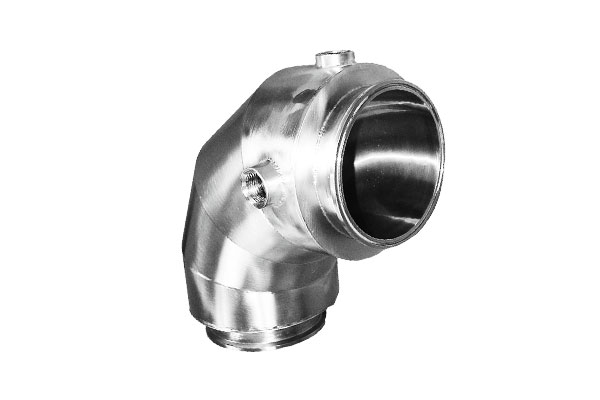
Key Physical Property Comparison
| Property | Brass(e.g., C36000) | Stainless Steel(e.g., 304 / 316) | Remarks |
| Density | ~8.4–8.7 g/cm³ | ~7.9–8.0 g/cm³ | Brass is slightly denser, which can impact weight-sensitive designs. |
| Melting Point | 900–940 °C | 1375–1450 °C | Stainless steel has a significantly higher melting point. |
| Thermal Conductivity | 100–120 W/m·K | 15–25 W/m·K | Brass conducts heat much better—important for heat exchangers, fittings. |
| Specific Heat Capacity | ~0.377 J/g·K | ~0.500 J/g·K | Stainless steel can absorb slightly more heat per unit mass. |
| Electrical Conductivity | 28%–56% IACS | ~1.2%–3% IACS | Brass is a far better electrical conductor than stainless steel. |
| Coefficient of Thermal Expansion | ~20 × 10⁻⁶ /°C | ~16–17 × 10⁻⁶ /°C | Brass expands more with temperature—may affect precision assemblies. |
| Modulus of Elasticity | ~97 GPa | ~190–210 GPa | Stainless steel is stiffer and more resistant to elastic deformation. |
| Magnetic Properties | Non-magnetic | Varies: 304 is non-magnetic; 430 is magnetic | Stainless can be magnetic or not, depending on grade; brass is always non-magnetic. |
6. Corrosion Resistance: Brass vs Stainless Steel
Corrosion resistance is one of the most critical factors in material selection, especially for applications in plumbing, marine environments, chemical processing, and outdoor installations.
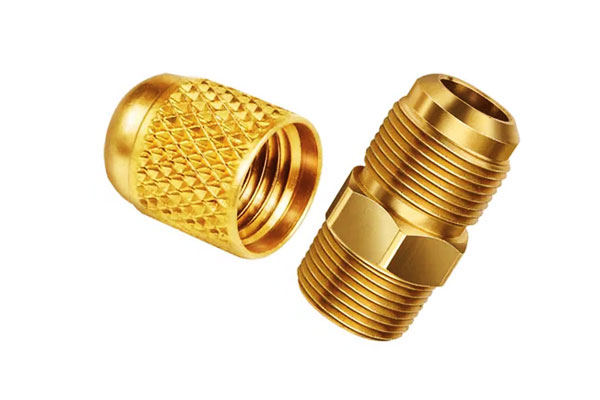
Brass: Corrosion Resistance Overview
| Strengths | Limitations |
| Good resistance to water, steam, and non-oxidizing acids | Susceptible to dezincification in certain environments |
| Performs well in low-chloride, indoor, or dry conditions | Can stress-corrode in presence of ammonia or moist environments |
| Naturally forms a patina that can protect against surface corrosion | Patina may not be acceptable for aesthetic or sanitary use |
Dezincification
A selective leaching process where zinc is removed from the alloy, leaving behind a porous, copper-rich structure.
It weakens the part and is particularly problematic in plumbing systems. Some brass grades are “dezincification-resistant” (DZR brass, e.g., CW602N).
Stainless Steel: Corrosion Resistance Overview
| Grade | Corrosion Behavior |
| 304 Stainless Steel | Good general corrosion resistance, vulnerable to chloride pitting |
| 316 Stainless Steel | Superior resistance due to molybdenum (2–3%), excellent in marine and acidic environments |
| 410/420 (Martensitic) | Moderate corrosion resistance, suitable for low-moisture environments |
Chromium Oxide Layer
All stainless steels form a passive chromium oxide film that protects the underlying metal.
When scratched or damaged, this layer self-heals in the presence of oxygen, making stainless steel highly durable in corrosive environments.
7. Manufacturing Processes of Brass vs Stainless Steel
Forming and Fabrication
Both brass and stainless steel are widely used in forming operations, but their behaviors during fabrication differ significantly.
- Brass, particularly in its annealed state, exhibits excellent ductility and is easily formed into complex shapes using standard metalworking processes.
Its low yield strength enables forming with minimal force, making it ideal for deep drawing, stamping, and bending. - Stainless steel, while also formable, requires greater forming forces due to its higher strength and inherent stiffness.
It tends to work harden during deformation, which may necessitate intermediate annealing to restore ductility and prevent cracking during multi-stage forming.
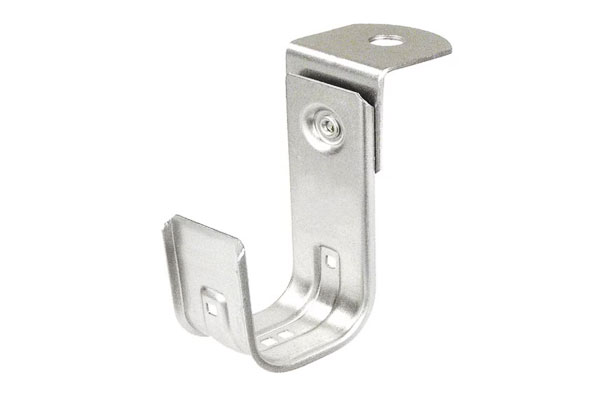
Casting
- Brass alloys have excellent castability, characterized by high fluidity, low shrinkage, and minimal gas absorption.
These properties enable the production of complex, high-precision components through conventional casting methods such as sand casting, die casting, and investment casting. - Stainless steel casting is more demanding due to its higher melting point (~1370–1450 °C) and susceptibility to shrinkage, porosity, and hot cracking.
Precision casting techniques like investment casting or centrifugal casting are often employed, and careful gating, riser design, and temperature control are essential for high-quality results.
Machining
- Brass is renowned for its excellent machinability, particularly in free-machining grades like C36000, which contain small amounts of lead.
It machines easily, produces smooth surface finishes, and exhibits low tool wear, making it ideal for high-speed, high-volume manufacturing. - Stainless steel, in contrast, is more challenging to machine.
Its tendency to work-harden, coupled with low thermal conductivity and high strength, leads to increased tool wear and heat generation.
Optimal machining of stainless steel requires rigid setups, coolant use, and carbide or coated high-speed steel tools, with carefully controlled speeds and feeds.
Welding
- Brass welding is difficult due to the high zinc content, which can volatilize under heat and lead to porosity, cracking, or fumes.
Techniques like gas brazing, soldering, or TIG welding with low-zinc filler rods are commonly used, often with pre-heating to minimize thermal shock. - Stainless steel is generally weldable using methods such as TIG (GTAW), MIG (GMAW), and SMAW, depending on the grade.
To maintain corrosion resistance and mechanical properties, it is crucial to select matching filler materials, control heat input, and, in some cases, perform post-weld heat treatment or passivation to restore the protective oxide layer.
8. Aesthetic & Surface Appearance
Brass
Brass is prized for its warm, rich golden hue, making it a popular choice for decorative and architectural applications such as furniture hardware, door handles, and ornamental sculptures.
Over time, brass naturally develops a patina—a surface layer that can range from subtle aging to verdigris, which some appreciate for its vintage or antique appeal.
However, this tarnishing can be undesirable in certain contexts, requiring regular polishing to restore and maintain its original bright, lustrous finish.
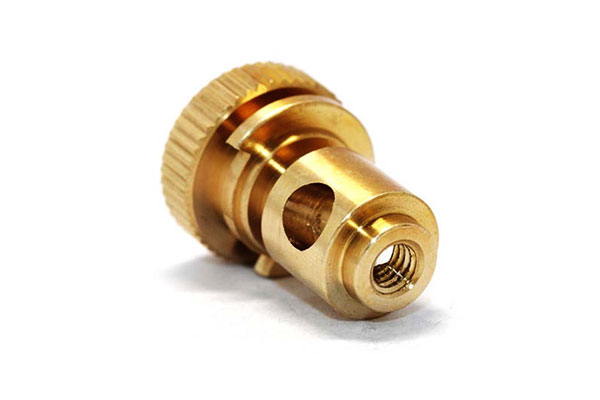
Stainless Steel
In contrast, stainless steel offers a sleek, modern appearance characterized by its cool, silver-gray luster.
Its versatility in surface finishing allows for a variety of aesthetic effects: a highly polished finish provides a mirror-like reflective quality, while a brushed or satin finish creates a subtle, textured, and understated look.
Stainless steel is highly resistant to staining and corrosion, enabling it to maintain its clean, attractive appearance over extended periods with minimal maintenance.
These qualities make stainless steel a preferred material for contemporary architectural features, kitchen appliances, and decorative elements where durability and longevity are essential.
9. Applications of Brass vs Stainless Steel
Brass Applications:
- Plumbing: faucets, valves, fittings, pipe connectors, water meters
- Architectural & Decorative: door handles, locks, lighting fixtures, musical instruments, sculptures
- Marine Industry: marine hardware, boat fittings, propellers
- Electrical & Electronics: connectors, terminals, electrical switches
- Mechanical Components: gears, bearings, bushings, valve seats, fasteners
- Consumer Goods: jewelry, musical instruments, decorative hardware
- Industrial Equipment: instrumentation components, heat exchangers, control valves
- Automotive: radiators, decorative trim, carburetor parts
Stainless Steel Applications:
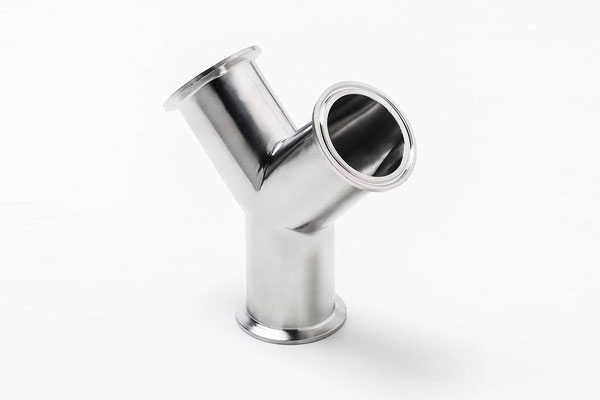
- Plumbing: pipes, valves, pumps, sanitary fittings, food and pharmaceutical piping
- Architectural & Decorative: cladding, handrails, kitchen appliances, countertops, elevator panels
- Marine Industry: marine fasteners, shafts, ship fittings, exhaust systems, heat exchangers
- Electrical & Electronics: structural frames, enclosures, corrosion-resistant connectors
- Mechanical Components: shafts, springs, fasteners, pumps, compressors, turbine components
- Consumer Goods: kitchenware, cutlery, cookware, medical devices, surgical tools
- Industrial Equipment: chemical reactors, pharmaceutical equipment, food processing machinery
- Automotive: exhaust systems, structural parts, fasteners
10. Comprehensive Comparison Table: Brass vs Stainless Steel
| Property / Aspect | Brass | Stainless Steel |
| Chemical Composition | Copper (Cu) + Zinc (Zn), may include Lead (Pb), Tin, Aluminum | Iron (Fe) + Chromium (≥10.5%) + Nickel + Molybdenum + Others |
| Density | ~8.4 – 8.7 g/cm³ | ~7.7 – 8.0 g/cm³ |
| Tensile Strength | 300 – 600 MPa | 500 – 1000 MPa |
| Yield Strength | 100 – 400 MPa | 200 – 900 MPa |
| Hardness (Brinell) | 55 – 110 HB | 150 – 600 HB |
| Corrosion Resistance | Good in water and mild chemicals; susceptible to dezincification | Excellent; especially 316 grade with Mo; highly resistant to acids, chlorides, and marine environments |
| Thermal Conductivity | High (~100–120 W/m·K) | Low (~15–25 W/m·K) |
| Electrical Conductivity | High; good electrical conductor | Low; poor electrical conductor |
| Machinability | Excellent, especially leaded brasses | Moderate to difficult; work-hardening requires care |
| Formability | Very good; easy to cold and hot form | Good but requires higher forces and sometimes annealing |
| Weldability | Challenging; zinc vapor can cause porosity; brazing preferred | Excellent; multiple welding methods with proper procedures |
| Aesthetic Appearance | Warm golden color; tarnishes and patinas over time | Modern silver-gray luster; maintains finish longer; available polished or brushed |
| Cost | Generally lower | Generally higher due to alloying elements and processing |
| Applications | Decorative hardware, plumbing, marine fittings, electrical components | Structural, architectural, food processing, medical, marine, chemical industries |
| Sustainability & Recycling | Highly recyclable; lower energy in processing | Highly recyclable; corrosion resistance extends lifecycle |
| Typical Grades / Alloys | C36000 (free machining), C46400 (architectural brass) | 304, 316, 430, 410 stainless steel |
11. Conclusion
Brass offers exceptional machinability, attractive appearance, and high conductivity—making it ideal for decorative, electrical, and heat-related applications.
Stainless steel, on the other hand, provides superior strength, corrosion resistance, and hygienic properties suited to structural, marine, and medical uses.
Material selection hinges on prioritizing strength, corrosion environment, machinability, conductivity, cost, and appearance.
For functional elegance, brass is the go-to choice; for performance and longevity, stainless steel prevails.
FAQs
Is brass better than stainless steel?
It depends on the application. Brass offers excellent machinability, thermal and electrical conductivity, and an attractive golden appearance, making it ideal for decorative and electrical uses.
Stainless steel excels in strength, corrosion resistance, and durability, making it better for harsh environments and structural applications.
What lasts longer, stainless steel or brass?
Stainless steel generally lasts longer, especially in corrosive or marine environments, due to its superior corrosion resistance and strength.
Brass may corrode or tarnish faster under certain conditions, like dezincification.
Which is better, brass or stainless steel valves?
Stainless steel valves are usually preferred in demanding, corrosive, or high-pressure applications due to their durability and corrosion resistance.
Brass valves work well for moderate pressures and non-corrosive fluids and are often chosen for cost-effectiveness and ease of machining.


